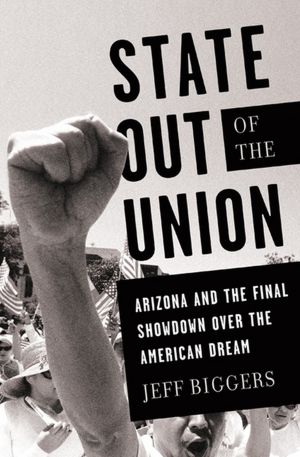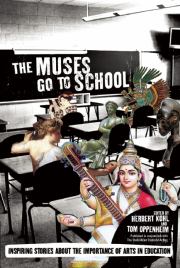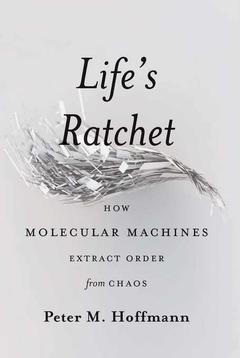-

State Out of the Union: Arizona and the Final Showdown Over the American Dream
by Jeff Biggers

The Nutshell:
Author and Arizona native Biggers chronicles the last few years in Arizona politics, when anti-immigration and states’ rights policies have dominated the conversation, and shows how Arizona has, time and again, been a place of showdowns over national divides.
Literary Lovechild Of:
Thomas E. Sheridan’s Arizona: A History and Rick Perlstein’s Nixonland: The Rise of a President and the Fracturing of America.
You'll Find It On Your Bookshelf If:
You want to move home to Tucson—but not until SB 1070 is repealed.
Cocktail Party Fodder:
Since 1994, about 5,000 migrants have died attempting to cross Arizona’s deserts.
For Optimal Benefit:
Read simultaneously with Arizona Governor Jan Brewer’s memoir Scorpions for Breakfast and see if you can spot any stylistic differences.
Snap Judgment:
Biggers suggests that Arizona will experience a backlash against current right-wing leaders like Jan Brewer, Russell Pearce, and Joe Arpaio, but his case would be stronger had he devoted more space to their opponents.
-

The Muses Go to School: Inspiring Stories About the Importance of Arts in Education
Edited by Herbert Kohl and Tom Oppenheim

The Nutshell:
Writer Kohl and acting coach Oppenheim pair personal essays by artists like playwright Moisés Kaufman and actress Phylicia Rashad with pieces by education scholars to demonstrate the importance of the arts in public schools.
Literary Lovechild Of:
John Dewey’s Art as Experience and Chicken Soup for the Artist’s Soul.
You'll Find It On Your Bookshelf If:
You’ve kept your drawings from kindergarten through sixth grade art class (filed by year of course) and expect they’ll be worth a lot of money someday.
Cocktail Party Fodder:
In elementary school, Rosie Perez wanted to play clarinet but couldn’t afford one—so she played air clarinet along with the orchestra.
For Optimal Benefit:
Use this book to bribe the chorus teacher into giving your kid a solo in the next concert.
Snap Judgment:
Any book with “inspiring” in the subtitle has given its readers fair warning. Nevertheless, it’s very hard to argue against arts education. (OK, we will: how do they expect low-income public schools to afford the arts without the help of outside funders?)
-

Life’s Ratchet: How Molecular Machines Extract Order from Chaos
by Peter M. Hoffmann

The Nutshell:
What is life, and what creates it? Wayne State University physicist Hoffmann answers this question by reducing life to its smallest molecular components—thanks to his nanotechnology research and the work of physicists, biologists, and even the ancient Greeks.
Literary Lovechild Of:
Erwin Schrödinger’s What Is Life? and James D. Watson’s The Double Helix: A Personal Account of the Discovery of the Structure of DNA.
You'll Find It On Your Bookshelf If:
You got a microscope for your 11th birthday—and your 12th birthday and your 13th birthday and your 14th birthday.
Cocktail Party Fodder:
The efficiency of a human body is about 20 percent; the rest of our calories maintain basic metabolic processes in our cells or get turned into heat through friction.
For Optimal Benefit:
Try putting an ant under a microscope sometime. It looks really big.
Snap Judgment:
Although it’s hard for a layperson to tell if the arguments will make waves, Hoffmann writes shockingly accessibly for a physicist—and he’s fun, too!



